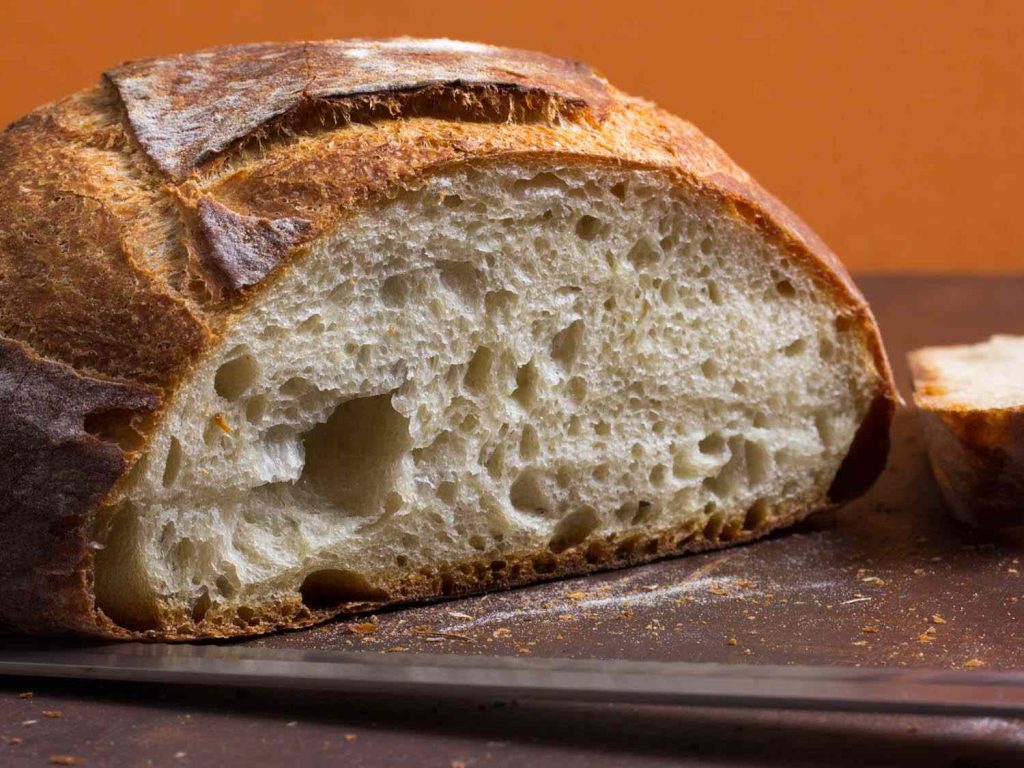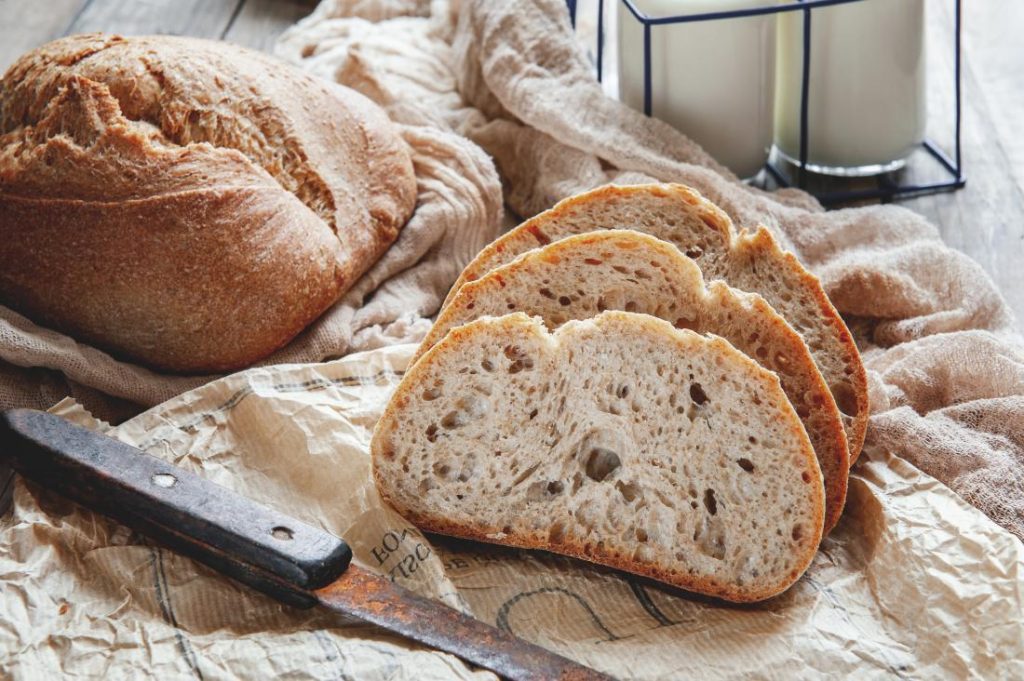Have you ever wondered how much a standard loaf of bread weighs? This is an important question to know the answer to, especially if you are a baker or someone who makes their own bread at home. In this blog post, we will break down the average weight of different types of loaves and why the weight can vary.

Table of Contents
How Much Does A Loaf Of Bread Weigh?
White sandwich bread usually weighs about 12-18 ounces per loaf while whole wheat sandwich bread usually weighs about 16-22 ounces per loaf.
Artisanal boules can weigh anywhere from 10-50 ounces depending on the size and shape of the loaf.
Lastly, sourdough loaves can range from 10-27 ounces depending on how it was shaped and baked.
Read more:
The Truth About Convection Vs Toaster Ovens: How the Latter Wins Every Time
Toaster Oven Vs Air Fryer: Which Is More Versatile in The Kitchen?
What Makes Differences?
The average weight of a loaf of bread depends on the type and size of the bread being made. The most common types are white sandwich bread, whole wheat sandwich bread, artisanal boules, and sourdough loaves.
It is important to note that these weights are just averages and there can be variations in individual loaves due to differences in ingredients used, baking time and temperature, as well as other factors that affect baking such as humidity levels in your kitchen or even altitude where you live.
Additionally, different bakeries may use different recipes which can also affect the final weight of the loaf.
One thing that all types of bread have in common though is that they will typically lose some moisture during storage so if you’re looking for an accurate measurement with your recipe it is best to weigh them fresh out of the oven!
FAQs
How many ounces in a slice of bread?
A slice of bread typically weighs around 2 ounces.
However, the exact weight may vary depending on the type of bread and how thick or thin it is sliced. For example, a thick slice of homemade bread might weigh closer to 3 ounces, while a thin store-bought slice could be as low as 1 ounce.
Therefore, when baking or preparing meals, it’s best to use a food scale to get an accurate measurement of the bread. To convert ounces into other units of measurement such as grams, you can use an online conversion calculator. This will help ensure that you’re adding the right amount of bread to your recipes.
How long to let the bread cool before removing it from the pan?
For most types of bread, including quick bread and yeast-raised loaves, a good rule of thumb is to allow the bread to cool for at least 10 minutes.
This will help ensure that the inside of the loaf has cooled sufficiently and that the structure of the bread has set properly. If you attempt to remove the loaf too early, it could easily fall apart or become misshapen. When in doubt, wait an extra few minutes before attempting to turn out the bread onto a cooling rack.
Once removed from the pan, leave the loaf on its side for another 10 minutes or so before slicing it. This will help ensure even cooling and reduce the chance of a soggy center. After allowing the loaf to cool sufficiently, it is ready to be sliced and enjoyed!

How many cups are in a loaf of bread?
The amount of cups in a loaf of bread can vary depending on the size and type of bread. A standard, store-bought white bread typically contains 3½ to 4 cups of flour per loaf.
However, some specialty or artisanal loaves may require more or less flour as ingredients such as nuts, seeds, fruit and other additions can change the overall flour measurements.
Additionally, homemade loaves can vary greatly in terms of the amount of flour used and thus, the number of cups per loaf. When attempting to determine how many cups are in a specific loaf, it is recommended that you refer to the recipe or instructions provided. If no such information is available, then it may be necessary to measure the loaf of bread and convert it into cups. To do this, you would need to weigh the loaf and then divide by 8 ounces per cup. This will give you an approximate measurement of how many cups are in that particular loaf of bread.
Additionally, there is a general rule for bakers when making a standard-sized loaf of white bread. A single loaf typically requires 3½ to 4 cups of sifted all-purpose flour, or 2⅔ cups of liquid (such as milk or water). Keep in mind that this is just a general guideline and your particular recipe may require different measurements.
In conclusion, the amount of cups in a loaf of bread can vary depending on the size, type and ingredients used. If you need to know exactly how many cups are in a particular loaf of bread, then it is best to refer to the instructions or recipe provided. Alternatively, you can use general guidelines for white bread loaves (3½ – 4 cups flour or 2⅔ cups liquid) or measure the loaf and divide by 8 ounces per cup.
Conclusion
We hope this blog post gave you some insight into how much a typical loaf of bread weighs! As stated before, there can be slight variations based on type, ingredients used, as well as other factors like storage environment or altitude but generally speaking a standard white or wheat sandwich bread should weigh between 12-22 ounces per loaf while artisanal boules or sourdoughs range from 10-50 ounces depending on size/shape. Thanks for reading!
References:








